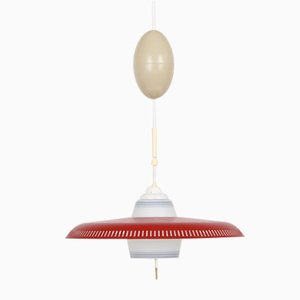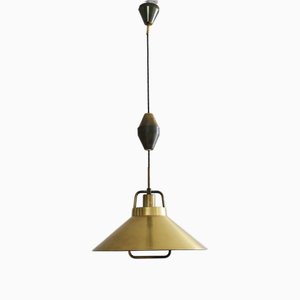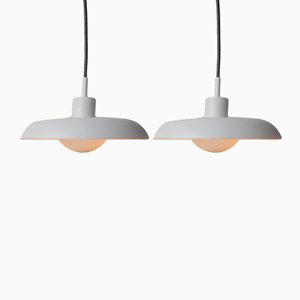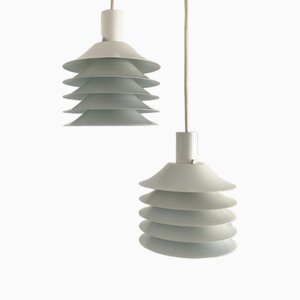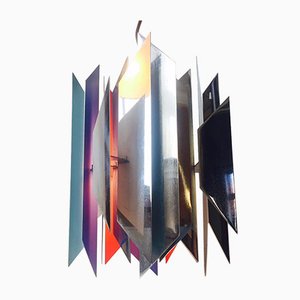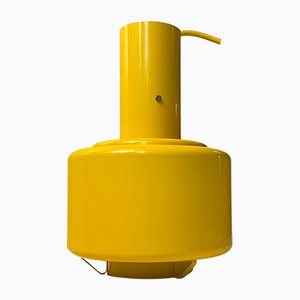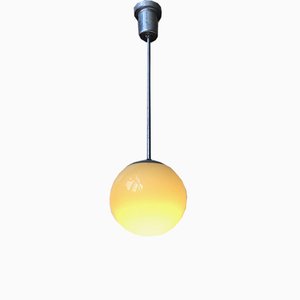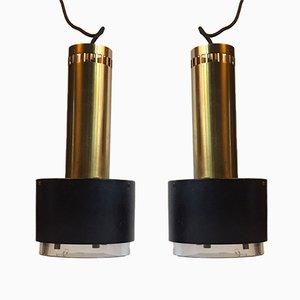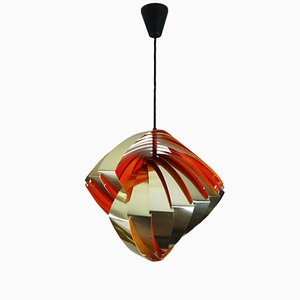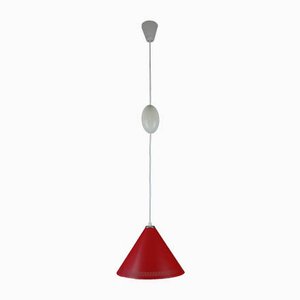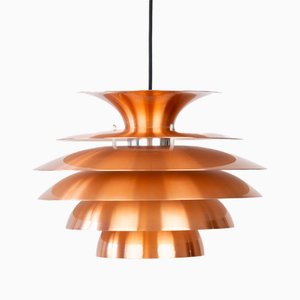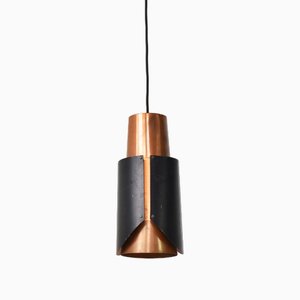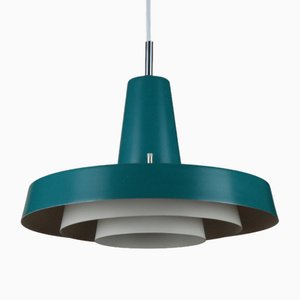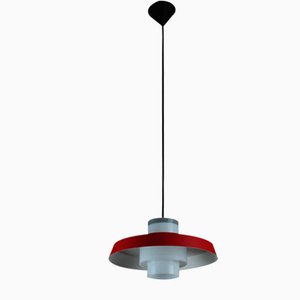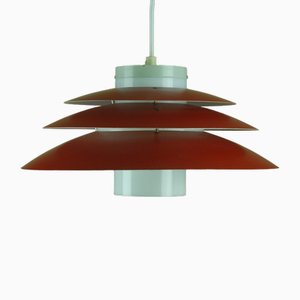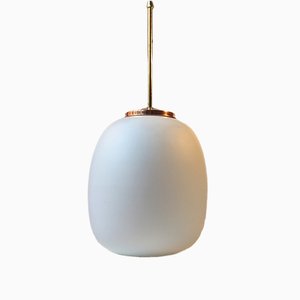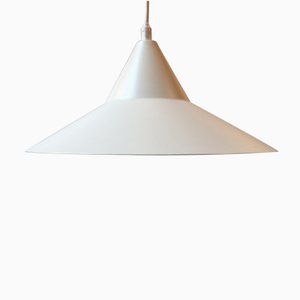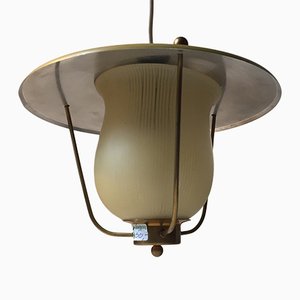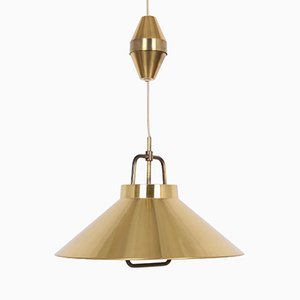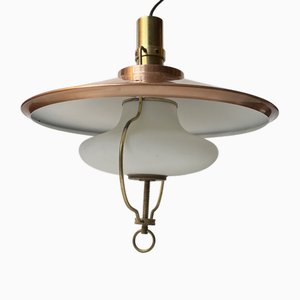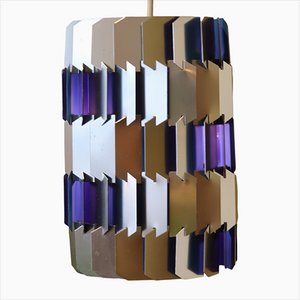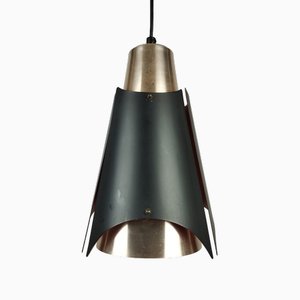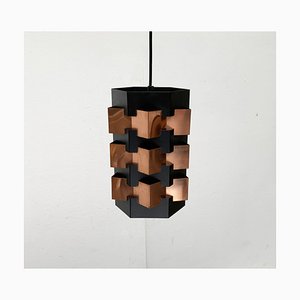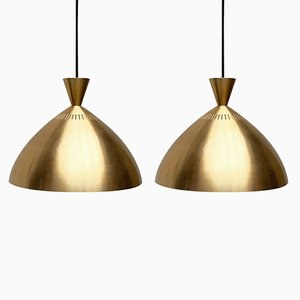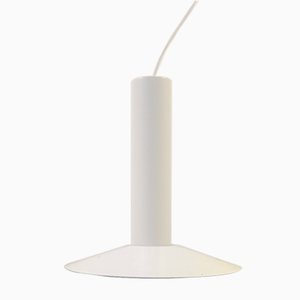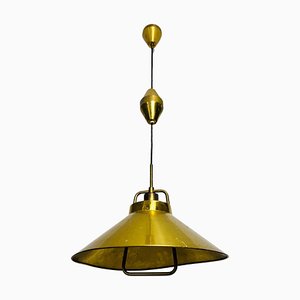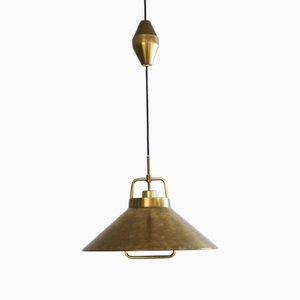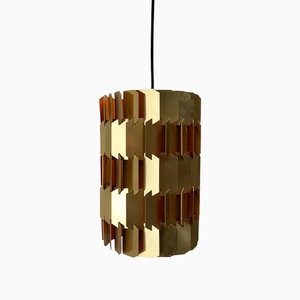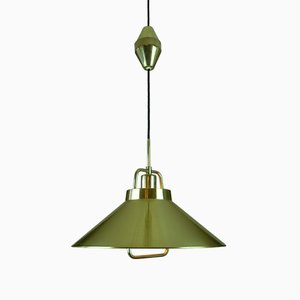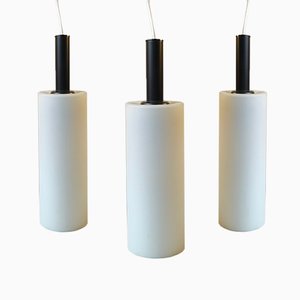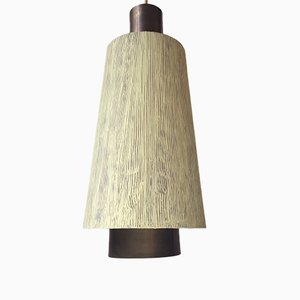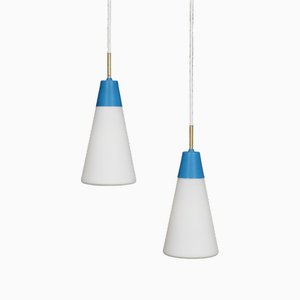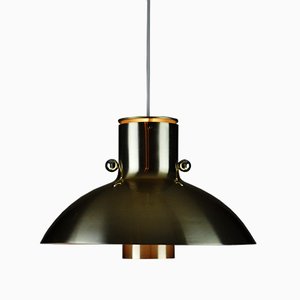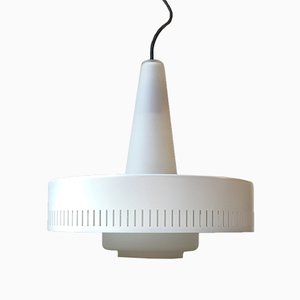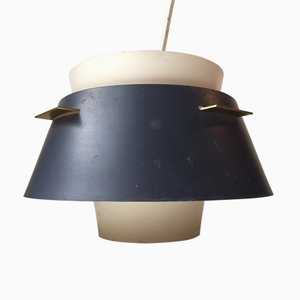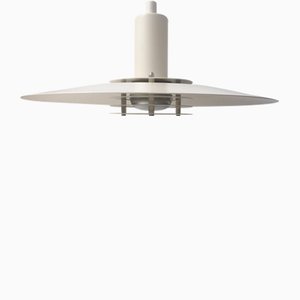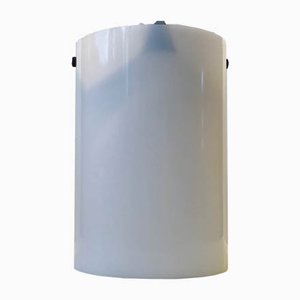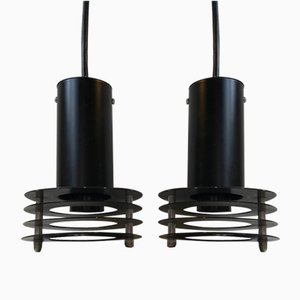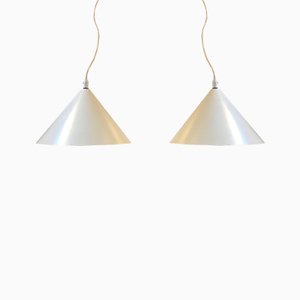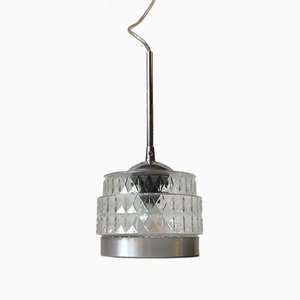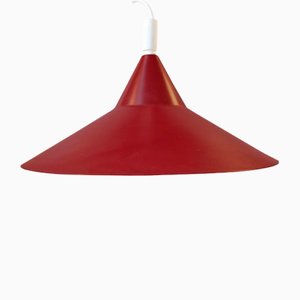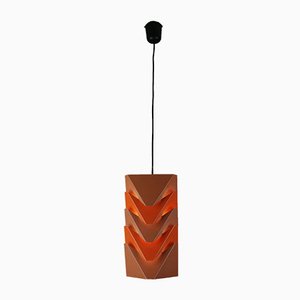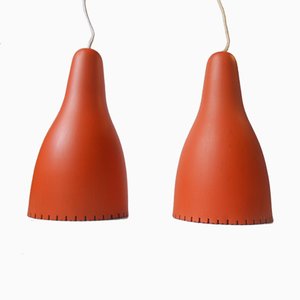
Danish lighting company Lyfa was originally founded ca. 1924 under the name of Københavns Lampe Og Lysekronefabrik in the early 20th century. Based in the greater Copenhagen area and renamed Lyfa ca. 1930, the firm began producing table lamps inspired by the multi-shaded PH Series (from 1925) by Poul Henningsen for Louis Poulsen. Lyfa's lighting continued to show this influence through the 1940s.
By the 1950s, Lyfa had built an international reputation for original, high-quality, modernist lamps. In the postwar era, the company collaborated with esteemed architects and designers to produce minimalist, sculptural, "Space Age" table lamps, wall lights, and pendants, especially in colored glass, plastic, and enameled aluminum.
Bent Karlby, in particular, created a number of successful designs for Lyfa in the 1960s, such as the Kvadrille Wall Light, Omega Pendant, Pan-Opticon Wall Light, Påfugl/Peacock Wall Light, and Wonderlamp Pendant. One of Lyfa's most iconic designs is the Facet Pendant (1963/66), as well as its successor, the polychrome Facet Pop Pendant (1970) by Louis Weisdorf. It's also believed that Lyfa was the main producer of Orrefors lighting and designer Carl Fagerlund.
Other standout Lyfa collaborators in the midcentury include Michael Andersen, Acton Bjørn, Claus Bonderup, Piet Hein, Klaus Helweg-Larsen, Simon Henningsen, Finn Juhl, and Nils and Eva Koppel.
In its heydey—from the 1950s to mid-1970s—Lyfa was considered a pioneer in innovative, architectural lighting. Along the way, the company received numerous awards—including multiple International Forum Product Design Awards. Lyfa merged with Danish lighting competitor Fog & Mørup in the mid '70s. The new company operated as Lyfa-Fog & Mørup until the 1980s when it was taken over by a mass-market lighting producer, Lyskaer, and the Fog & Mørup brand was abandoned. That company has since changed hands, with the Lyfa label currently owned (but largely discontinued) by Nordlux of Ålborg.

